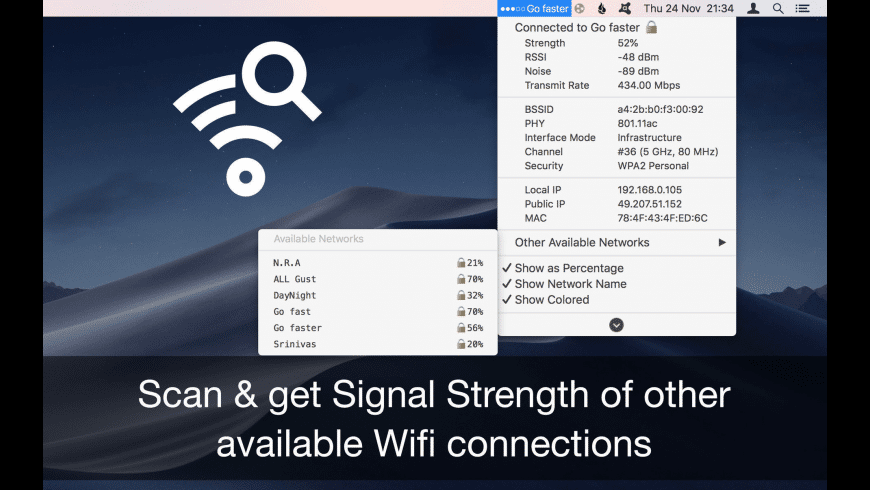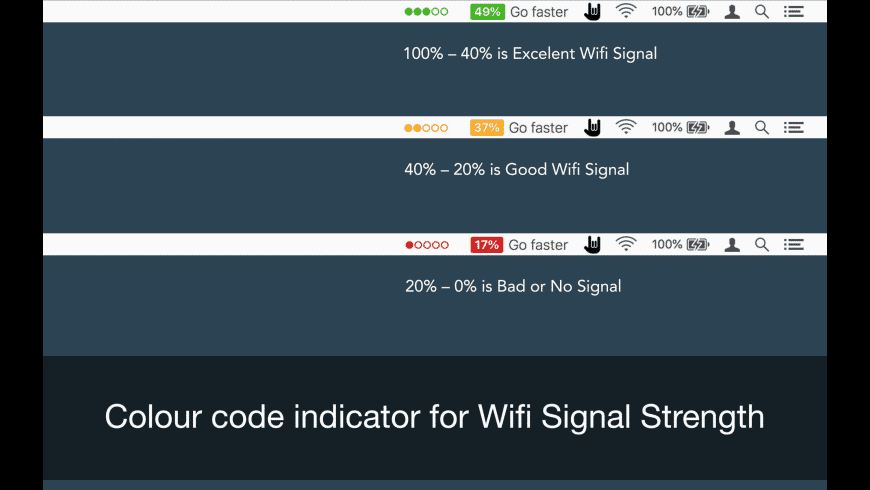A Wi-Fi heatmap is a visual representation of the wireless signal coverage and strength. Wi-Fi heatmaps are generally overlaid on top of a building or facility floor plan to help give network owners a clear idea of where problem areas are located in relation to the collected survey data and access point locations. Fixed issue: On a wireless network with multiple access points, WirelessNetView displayed all access points as connected. Version 1.55: Added 'Advanced Options' window (F9), which allows you to choose the wireless network adapter that will be used to scan the wireless networks. This option is useful if you have multiple wireless network adapters.
Overview
For best performance in a wireless environment, it is key that wireless devices are able to distinguish received signals as legitimate information they should be listening to and ignore any background signals on the spectrum. There is a concept known as the Signal to Noise Ratio or SNR, that ensures the best wireless functionality. The SNR is the difference between the received wireless signal and the noise floor. The noise floor is simply erroneous background transmissions that are emitted from either other devices that are too far away for the signal to be intelligible, or by devices that are inadvertently creating interference on the same frequency.
- Either way, it shouldn't matter, because I am using an external USB Wifi dongle. (And it's not the cause of the problem, I checked that) B: I am running the latest Windows 10 version, with every Update installed. Its Version 1803 and Build 17134.81. C: No it had nothing to do with an Update. I moved and was forced to switch from Lan to Wifi.
- Wi-Fi Scanner allows you to easily locate visible wireless networks and its corresponding information. The tool obtains the network name (SSID), signal strength (RSSI) and quality, MAC address (BSSID), channel, maximum and achievable data rate, security, and much more.

For example, if a client device's radio receives a signal at -75 dBm, and the noise floor is -90 dBm, then the effective SNR is 15 dB. This would then reflect as a signal strength of 15 dB for this wireless connection.



The further a received signal is from the noise floor, the better the signal quality. Signals close to the noise floor can be subject to data corruption, which will result in retransmissions between the transmitter and receiver. This will degrade wireless throughput and latency as the retransmitted signals will take up airtime in the wireless environment.
Wifi Wireless Signal Strength Explorer And Scanner 1.25

Wifi Wireless Signal Strength Explorer And Scanner 1.2 Online
Cisco Meraki Access Points reference the Signal to Noise Ratio as the indication for the quality of the wireless connection. This provides a more accurate depiction of the health of the wireless signals as it takes the RF environment and ambient noise levels into account. For instance, a received signal of -65 dBm can be considered good at a location that has a noise floor of -90 dBm (SNR 25 dB) but not so much at a location with a noise floor of -80 dBm (SNR 15 dB).
Strength Explorer Gallup
Generally, a signal with an SNR value of 20 dB or more is recommended for data networks where as an SNR value of 25 dB or more is recommended for networks that use voice applications. Learn more about Signal-to-Noise Ratio.